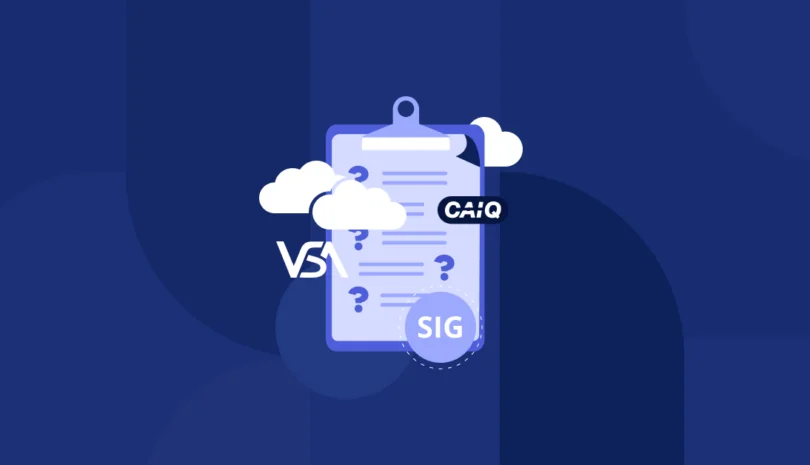Cybersecurity liability is the responsibility you shoulder for security mishaps that occur online. For instance, when your customers share their personal information with you on web forms or in emails, you can conceivably be held liable for anything that happens to that data.
It’s not just large corporations that experience data breaches and fall victim to other forms of cybercrime such as ransomware attacks, malware attacks and phishing schemes. According to CNBC, 43% of cyberattacks target small businesses. Cybersecurity liability assumes responsibility for these attacks and proactively addresses them by committing to improving the company’s cybersecurity posture through encryption, security risk assessments, third-party security assessments, and better backup plans. Not enforcing these security policies can result in regulatory fines, legal fees, and a loss of customer trust.
Since the average cyberattack costs $200,000, many small businesses can’t afford to stay open if they were to suffer a major attack. For years, network security experts have been telling the owners of small companies to make cybersecurity a top priority, but many don’t know how to do that.
Some owners assume high-tech security is out of their reach due to the cost; however, security should be an essential item in every company’s budget. If you can’t afford to protect your data now, you won’t readily recover from a data breach.
No Business Is Immune to Cyberattacks and Data Breaches
Cybercrime is all but unavoidable, but there are ways to make it exceptionally difficult for cybercriminals to achieve their nefarious goals. Nearly every major corporation has suffered at least one data breach.
However, not all data breaches end in disaster. A breach won’t bring the company down when the exposed data is encrypted and therefore inaccessible for the cybercriminals.
The last company you’d expect to see experience a data breach would be an online privacy and security management company, but that’s what happened to Blur in 2018. According to the parent company, Abine, a file containing user emails, full names, password hints and IP addresses was exposed on a company server.
The data was not encrypted. Had it been encrypted, the attack wouldn’t have been a big deal.
While it’s unclear exactly how the Blur file got exposed, it appears to have been an instance of user error. Specifically, a person or program failed to protect the file on the server. Files containing this type of data should always be placed in a protected environment and the data encrypted.
Depending on your industry and which data-protection regulations govern it, this type of breakdown could cost your business millions of dollars.
How to Address Cyber Liability
The most effective way to address your liability is to strengthen and enforce your company’s IT security policy and protocols. If you created a security policy, but have yet to enforce the terms, now is the time to enact that enforcement.
The longer your employees get used to doing things their way, the harder it will be to get them to change. As long as your team continues to do things their way, your company could be at risk for huge fines and a damaged reputation.
Strong, enforced security policies will mitigate the potential for a cyberattack. These can include:
- Encryption. Some industries require data to be encrypted end-to-end, which means it’s encrypted both at rest and in transit. This is difficult for some businesses to achieve, so at a minimum, data should be encrypted at rest. If it gets stolen, encrypted data can’t be read.
- Cyber liability insurance. For small businesses, cyber liability insurance should be non-negotiable. It covers your liability if sensitive information is exposed in a data breach. This type of insurance is especially important in the healthcare industry, since data protection is governed by strict HIPAA regulations.
- A strong backup and recovery plan. What would your company do if you fell victim to a ransomware attack that demanded $500,000 to unlock your data? If you keep regular offline backups, you’d simply start over without batting an eye.
- Third-party vendor security assessment. You need to know who you’re doing business with. Your third-party vendors may not employ the same security standards you maintain for your business. A third-party vendor security assessment will verify whether your vendors meet your security standards. A third-party vendor auditor will assess each of your vendors for risks and supply solutions to strengthen any areas of concern.
- Cybersecurity risk assessment. A cybersecurity risk assessment renders an external view of your organization’s attack surface and analyzes internal security controls. The auditor will identify potential security gaps and assess current controls, then come up with ideas to close the gaps and strengthen mitigation.
For instance, if you’re using WordPress to run your website and you haven’t updated the core files or plugins, a risk assessment will let you know those are areas of vulnerability. Also, if your cloud environment doesn’t segment financials from the rest of your data, that will also surface as a point of vulnerability.
When it comes to verifying internal security controls, a risk assessment will study your security policies to make sure they’re up to date. For instance, you might not have a remote working policy that prohibits accessing company networks from public WiFi.
Or you might not have a Bring Your Own Device (BYOD) policy that requires employees to install proprietary software to protect company data stored on their personal device. A cybersecurity assessment will also keep your stakeholders informed of potential vulnerabilities, challenges and everything you do to strengthen your company’s security posture.
Mitigate Third-Party Risks With Panorays
Do your third-party vendors meet or exceed your company’s security standards? We’ll help you find out.
Panorays even helps your vendors mitigate security gaps by offering remediation plans. In this sense, our services will provide immense benefit to your vendors, which can have a positive impact on your relationships.
We’ll give you a 360-degree view of your suppliers, and assist in getting them to comply with regulations while maintaining continuous visibility. Our automated system will detect when your suppliers aren’t adhering to your internal security policies.
You’ll get live alerts regarding any security changes or breaches involving your third parties. At Panorays, we’re experts in vendor risk management. Sign up for a free Panorays demo, or contact us to learn more.



